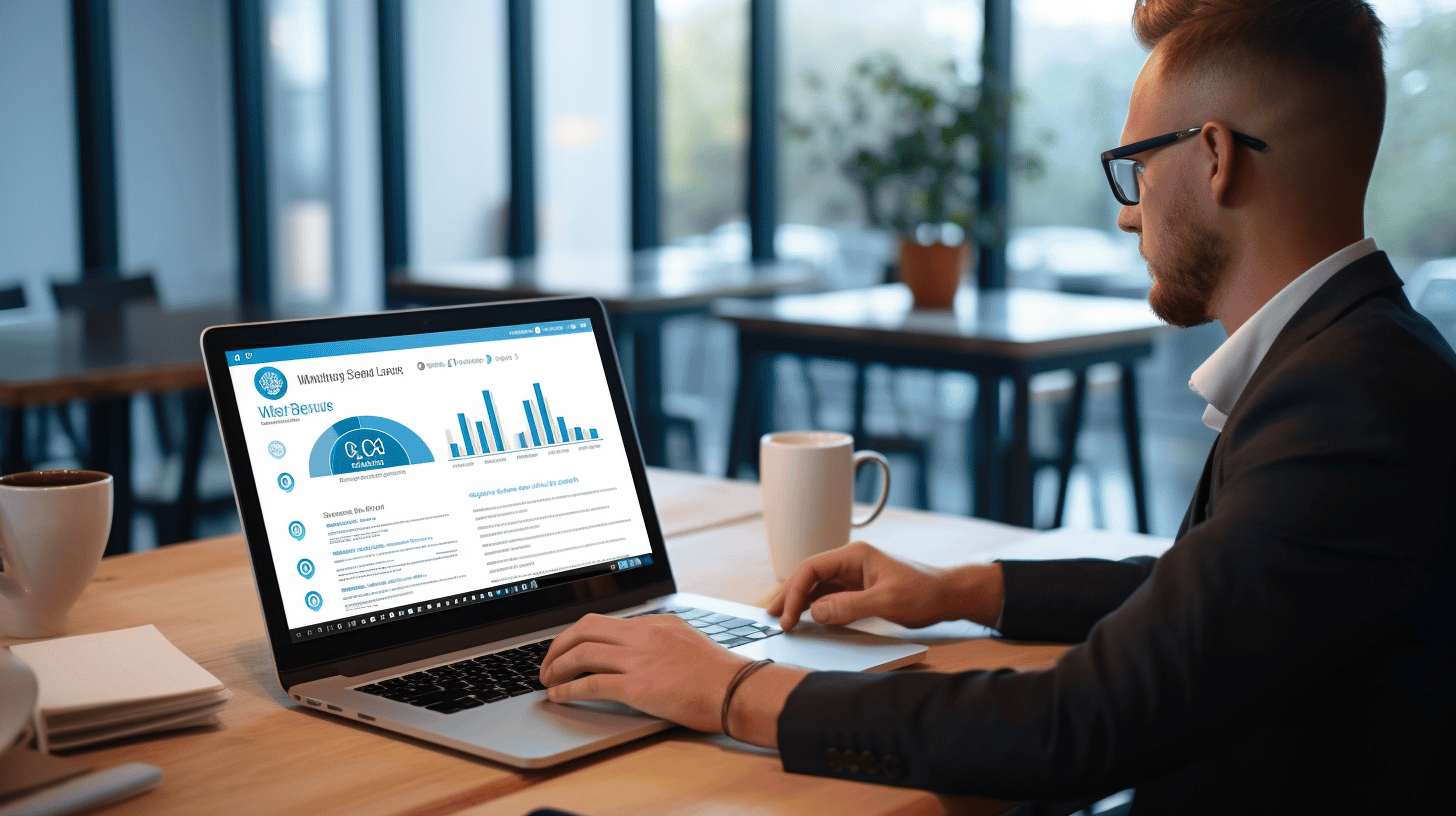管理 WordPress 网站可能是一件令人兴奋且回报丰厚的事情。无论您是企业主、博主,还是只是热衷于在线分享内容的人,拥有一个维护良好的 WordPress 网站对于在当今的数字环境中取得成功至关重要。然而,这不仅仅是创建一个漂亮的网站和发布引人入胜的内容;它还涉及不断管理和优化它以提供最佳的用户体验。
在本文中,我们将为您提供成功管理 WordPress 网站的全面路线图。从定期更新到安全措施、从性能优化到备份和维护,我们将涵盖有效管理 WordPress 网站的所有基本方面。我们还将探索 WordPress 世界中的新兴趋势,以帮助您保持领先地位。
因此,如果您已准备好将 WordPress 网站管理提升到新的水平,那就系好安全带,让我们一起开始吧!🚀🌟
定期更新的重要性
在不断发展的技术世界中,定期更新已成为网站管理的基本方面。无论您经营的是个人博客、电子商务网站还是商业网站,保持 WordPress 主题和插件的更新对于实现最佳性能至关重要。
🔑 实现最佳性能的关键更新
定期更新有很多好处,包括提高安全性、增强功能以及提高与最新版本 WordPress 的兼容性。以下是定期更新至关重要的一些主要原因:
- 安全增强功能: 黑客不断在网站中寻找新的漏洞加以利用。通过保持主题和插件更新,您可以确保安装了最新的安全补丁,从而最大限度地降低未经授权的访问和数据泄露的风险。
- 错误修复和性能: 更新通常会修复错误并提高性能,从而为您和您的访客带来更流畅、更快速的网站体验。这些更新解决了可能导致错误、加载时间缓慢或与其他插件或主题的兼容性问题。
- 与最新 WordPress 版本的兼容性: WordPress 经常发布新版本,提供更新的功能和改进。通过定期更新主题和插件,您可以确保与最新的 WordPress 版本兼容,从而充分利用新特性和功能。
- 新特性和功能: 主题和插件开发人员不断致力于添加新功能并改进现有功能。定期更新可确保您能够访问这些新功能,从而增强您的网站并提供出色的用户体验。
请记住,不更新主题和插件可能会对网站的整体性能和安全性造成严重后果。花时间定期更新 WordPress 网站是一项长期回报丰厚的投资。
要了解有关为获得最佳性能而应优先考虑的关键更新的更多信息,请查看我们的综合指南 实现最佳性能的关键更新。本指南涵盖了有关有效管理高性能 WordPress 网站更新所需了解的所有内容。
绩效评估与优化
定期检查网站的性能对于优化至关重要。通过评估跳出率等关键指标并了解网站的目标,您可以确定需要改进的地方并采取切实可行的措施来增强用户体验。在本节中,我们将深入探讨跳出率检查的重要性以及设定明确的网站目标以优化您的 WordPress 性能。
跳出率评估
跳出率是指仅浏览一页后离开网站的用户百分比。高跳出率可能表明访问者缺乏参与度和不满意。要有效地检查和改善跳出率,请考虑以下提示:
- 分析您的内容: 深入研究网页内容。内容是否相关、引人入胜且易于理解?标题和副标题是否引人注目?通过制作引人入胜且有价值的内容,您可以吸引用户在您的网站上停留更长时间。
- 改善页面加载时间: 加载时间过长通常会导致跳出率过高。用户希望网站能够快速加载,如果等待时间过长,他们很可能会放弃该页面。通过压缩图片、缩小代码和利用缓存技术来优化网站的性能。
- 增强导航: 确保您的网站导航直观且用户友好。用户应该能够毫不费力地找到他们想要的内容。集成清晰的菜单、面包屑和搜索功能,引导访问者浏览您的网站并减少挫败感。
- 优化移动端体验: 随着智能手机的使用日益增多,优化您的网站以适应移动设备至关重要。确保您的网站对移动设备具有响应能力,具有易于阅读的文本、格式正确的图片和直观的移动导航。
网站目标
为了有效优化 WordPress 性能,您需要建立明确的网站目标。这些目标提供了方向并作为成功的基准。以下是您可以设置引人注目且可衡量的网站目标的方法:
- 明确你的目标: 首先确定您希望通过网站实现什么目标。是吸引更多潜在客户、增加销售额、提高品牌知名度,还是其他什么?明确定义您的目标,以使您的优化工作与您的业务目标保持一致。
- 使目标可衡量: 设定具体、可衡量、可实现、相关且有时限 (SMART) 的目标。例如,不要设定“增加网站流量”的目标,而是设定一个 SMART 目标,例如“在六个月内将自然流量增加 25%”。这有助于您跟踪进度并衡量优化策略的成功程度。
- 细分你的目标: 将目标细分为更小、更易于管理的部分。例如,如果您的总体目标是增加销售额,则可以设定与提高网站转化率、增强产品页面或实施废弃购物车电子邮件活动相关的目标。通过细分目标,您可以专注于系统地优化网站的不同方面。
定期检查网站的性能(包括跳出率和目标)对于优化至关重要。通过实施上述提示并将您的努力与网站目标保持一致,您将走上改善 WordPress 性能的道路。
记住,总有进步的空间!🚀
安全措施
在当今的数字环境中,网站安全至关重要。无论您管理的是个人博客还是在线商店,采取主动措施保护您的 WordPress 网站都至关重要。本节将探讨每个网站所有者都应考虑实施的一些基本安全措施。
使用强密码
您可以采取的最简单但最有效的安全措施之一是使用强密码。强密码可以防止未经授权的访问,并保护您的网站免受潜在威胁。以下是创建强密码的一些技巧:
- 长度:密码长度至少为 12 个字符,以确保您的密码难以猜测。
- 复杂:密码中包含大写、小写字母、数字和特殊字符的组合。
- 避免常见模式:避免使用“123456”或“password”等可预测的模式。这些是黑客最先尝试的组合。
- 每个帐户独一无二:避免对多个帐户使用相同的密码,因为一个帐户的泄露可能会导致其他帐户的泄露。
请记住,强密码是防止未经授权访问您的 WordPress 网站的第一道防线。值得花时间创建并定期更新密码以维护网站安全。
定期安全检查
定期进行安全检查对于识别和解决 WordPress 网站中的漏洞至关重要。通过进行例行检查,您可以在任何潜在的安全问题升级之前发现它们。以下是一些需要考虑的基本安全检查:
- 更新:保持 WordPress 核心、插件和主题为最新。开发人员经常发布更新来修补安全漏洞。
- 备份:定期备份您的网站文件和数据库,以确保在受到攻击或数据丢失时能够恢复您的网站。
- 恶意软件扫描:定期运行恶意软件扫描以识别并删除可能已注入您网站的任何恶意代码或文件。
- 文件权限:审查并设置适当的文件权限以限制对关键文件的未经授权的访问。
通过定期执行这些安全检查,您可以维护 WordPress 网站的完整性和安全性。
双重身份验证
双重身份验证 (2FA) 为您的 WordPress 登录过程增加了一层额外的安全保护。它提供了传统用户名和密码验证之外的额外步骤,使恶意行为者更难获得未经授权的访问权限。2FA 的工作原理如下:
- 照常输入您的用户名和密码。
- 成功登录后,系统将提示您使用第二个因素来验证您的身份,例如发送到您的电子邮件的唯一代码或智能手机上的身份验证器应用程序生成的代码。
双因素身份验证是一种非常有效的安全措施,可显著降低未经授权访问您的 WordPress 网站的风险。
总之,通过强密码、定期安全检查和双因素身份验证等措施确保网站安全是 WordPress 网站管理的最佳实践。通过实施这些安全措施,您可以保护您的网站免受潜在威胁,并确保您和您的访问者拥有安全的在线体验。
有关关键 WordPress 安全措施的详细信息,请查看 博客文章.
备份与维护
定期备份是维护 WordPress 网站安全的重要部分。建立备份系统来保护您宝贵的内容和数据免遭丢失或损坏至关重要。无论是由于服务器崩溃、黑客攻击还是网站维护期间的失误,拥有最近的备份都会让您高枕无忧,并能够快速恢复您的网站。
定期和周期性备份
定期备份 WordPress 网站可确保您拥有所有文件、数据库、主题、插件和媒体内容的副本。以下是您应该将备份作为日常维护任务一部分的一些原因:
- 防止数据丢失: 如果网站出现故障或数据损坏,拥有最新备份可确保您不会失去所有辛苦工作。您将能够快速轻松地将网站恢复到正常工作状态。
- 从黑客攻击中恢复: 不幸的是,网站是黑客的目标。如果您的网站受到攻击,备份可以让您恢复到攻击发生前的干净版本。这样,您就可以保护您的数据并保护您的用户。
- 更新期间安心无忧: 出于安全和性能原因,更新 WordPress 核心、主题和插件至关重要。但是,有时更新可能会导致问题或冲突,从而破坏您的网站。通过备份,您可以放心更新,因为如果出现任何问题,您有一个还原点。
- 轻松迁移或克隆: 当您需要将网站迁移到新的托管服务提供商或创建克隆以进行测试时,备份非常有用。只需在新服务器上恢复备份,一切就绪。
为了确保无缝备份过程,请考虑使用可靠的 WordPress 备份插件。这些插件可自动执行备份过程,允许您设置计划备份并将其存储在安全位置,例如云或外部服务器。
定期测试备份也很重要,以确保它们有效且正常运行。毕竟,如果备份无法正确恢复,那么备份的初衷就落空了。
“查看我们的综合指南 WordPress 备份和更新技巧 有关如何有效备份和维护 WordPress 网站的分步说明。”
网站外观和用户体验
对于网站而言,外观和用户体验在吸引和留住访客注意力方面起着至关重要的作用。具有视觉吸引力和用户友好的设计可以极大地吸引用户并推动转化。在本节中,我们将探讨网站外观和用户体验的三个关键方面:图像和图形优化、设计简约以及响应式和移动优先设计。
图像和图形优化
优化图像和图形对于缩短页面加载时间和增强用户体验至关重要。加载缓慢的网站可能会导致用户失望和高跳出率。以下是优化图像和图形以获得最佳性能的一些技巧:
- 使用压缩图像格式(例如 JPEG 或 PNG)来减小文件大小而不影响质量。
- 将图像大小调整为适合网络的尺寸,避免图像过大而减慢加载时间。
- 利用延迟加载等附加工具,延迟加载图像直到它们在用户屏幕上可见为止。
- 为您的图片添加描述性 alt 标签,不仅出于 SEO 目的,还可以为视障用户提供背景信息。
请记住,优化的视觉体验可以极大地促进用户体验。让您的网站保持视觉震撼和快速运行!
设计中的极简主义
极简主义不仅仅是一种趋势,它是一种注重简洁、清晰和可用性的设计理念。通过采用极简主义的网站设计方法,您可以创建一个干净整洁的用户界面,让访问者可以轻松浏览您的网站。以下是采用极简主义的一些好处:
- 提高可读性:清晰的字体和充足的空白使用户更容易阅读和消化您的内容。
- 更快的加载时间:简约设计通常具有较少的元素,从而缩短加载时间并提高性能。
- 增强焦点:通过减少干扰和消除不必要的元素,您可以引导用户的注意力到网站的关键区域。
拥抱简约的力量,为您的用户提供优雅、直观的浏览体验。
响应式和移动优先设计
在当今以移动设备为中心的世界中,设计与各种设备和屏幕尺寸兼容的网站至关重要。响应式设计可确保您的网站无缝适应不同的分辨率,从而在台式机、智能手机和平板电脑上提供最佳的观看体验。以下是响应式和移动优先设计至关重要的原因:
- 提高可访问性:移动友好型设计允许用户随时随地访问您的网站,从而扩大您的影响力和参与度。
- 更好的搜索引擎排名:像 Google 这样的搜索引擎在其搜索结果中优先考虑适合移动设备的网站,从而让您在可见性方面具有竞争优势。
- 增强用户体验:无论使用哪种设备,用户都希望获得流畅、直观的浏览体验。响应式设计可确保跨平台的一致体验。
确保您的网站响应迅速,并采用移动优先的理念进行设计。这不再是一种选择,而是当今数字环境中的必需品。
通过优化图片和图形、拥抱极简主义以及采用响应式和移动优先设计,您可以创建一个视觉上令人愉悦且用户友好的网站,给访问者留下深刻印象。请记住,积极的用户体验可以提高参与度、增加转化率,并最终使您的在线形象取得成功。
高效管理多个网站
在当今的数字时代,拥有多个网站非常普遍。无论您是企业家、营销人员还是企业主,管理多个网站都可能是一项挑战。但是,通过使用集中式仪表板,您可以简化 WordPress 网站的管理,让您的生活更加轻松。
使用集中式仪表板
集中式仪表板可让您将所有 WordPress 网站集中到一个位置,为您提供其性能的全面概览,并使您能够高效地管理它们。现在,您无需单独登录每个网站,而是可以从一个位置访问所有网站。这不仅节省了您的时间,而且还最大限度地降低了在多个界面之间导航导致错误的风险。
通过使用集中式仪表板,您可以:
- 监控站点性能: 跟踪网站的性能指标,例如页面加载时间、正常运行时间和流量。这有助于您发现任何问题并采取主动措施优化网站,以获得更好的用户体验。
- 管理内容: 轻松同时在多个网站上创建、编辑和发布内容。您可以在一个方便的位置更新博客文章、添加新页面或修改现有内容。
- 控制用户访问: 为每个网站向团队成员或客户分配不同的访问权限级别。您可以授予他们编辑内容、管理插件或分析网站分析的权限,而不会损害网站的安全性和完整性。
- 安装和更新插件: 通过集中式仪表板,您只需单击几下即可在所有网站上安装和更新插件。这可确保您的网站配备最新的功能和安全补丁,从而降低漏洞风险。
- 备份和恢复: 定期备份您的网站并在需要时恢复它们,所有操作都通过一个仪表板完成。这可确保您的数据安全,并在发生任何意外事件时让您高枕无忧。
- 简化工作流程: 集中式仪表板简化了您的工作流程,无需在不同网站和界面之间切换。它让您可以专注于最重要的事情 - 创建有价值的内容并扩大您的在线影响力。
从本质上讲,在管理多个 WordPress 网站时,使用集中式仪表板可以带来翻天覆地的变化。它为您的网站管理流程带来了便利、效率和控制力,使您能够做出明智的决策并轻松实现您的数字目标。
例如,Managed WP 提供了一个集中式仪表板,可让您简化 WordPress 管理。借助其直观的界面,您可以轻松监控和管理所有网站。要了解有关如何自动化和简化 WordPress Web 开发工作流程的更多信息,请查看他们的文章 简化您的 WordPress 管理.
新兴的 WordPress 趋势
在不断发展的网站开发领域,对于任何想要增强网站功能和用户体验的人来说,掌握最新趋势都至关重要。WordPress 是一个继续主导 Web 开发领域的平台。凭借其丰富的主题、插件和自定义选项,WordPress 仍然是初学者和经验丰富的开发人员的首选。
探索新兴的 WordPress 趋势可以为这个流行平台的发展方向提供宝贵的见解。在本文中,我们将深入探讨在 WordPress 用户中越来越受欢迎的三种令人兴奋的趋势:
无头 WordPress
WordPress 中最有趣的趋势之一是“无头”网站的概念。传统上,WordPress 被用作内容管理系统 (CMS),其中前端和后端紧密耦合。然而,随着解耦架构的兴起,开发人员现在正在探索将表示层(前端)与 CMS(后端)分离的想法。
Headless WordPress 允许开发人员利用 WordPress 作为内容管理系统的强大功能和灵活性,同时使用单独的前端框架(例如 React 或 Angular)来处理用户界面。前端和后端的分离使开发人员能够创建高度交互和高性能的网站。
无头 WordPress 的一些好处包括:
- 提高网站性能:通过将前端渲染转移到单独的框架,网站可以加载得更快并提供无缝的用户体验。
- 灵活性和可扩展性:无头架构可以轻松与其他系统和平台集成,让开发人员可以自由地为每个特定任务选择合适的工具。
- 增强的内容发布工作流程:借助无头 WordPress,内容编辑者可以使用熟悉的 WordPress 后端来管理内容,同时将其无缝地传递到各种平台和渠道。
人工智能集成
人工智能 (AI) 正在改变各行各业,Web 开发也不例外。将 AI 技术集成到 WordPress 网站可以彻底改变用户与在线内容的互动和体验方式。从个性化推荐到聊天机器人,AI 可以增强网站功能并提供更具吸引力的用户体验。
通过将 AI 集成到 WordPress,网站所有者可以:
- 个性化用户体验:人工智能算法可以分析用户行为和偏好,提供个性化的内容推荐,提高参与度和转化率。
- 实施聊天机器人来为客户提供支持:人工智能聊天机器人可以处理客户查询并提供即时支持,从而缩短响应时间并提高客户满意度。
- 自动化内容创建:AI工具可以生成博客文章、产品描述和社交媒体内容,为内容创建者节省时间和精力。
拖放式页面构建器
创建一个视觉效果极佳的网站需要高级编码技能的时代已经一去不复返了。随着拖放式页面构建器的兴起,任何人,无论技术专长如何,都可以设计出具有专业外观的网站。
WordPress 拖放页面构建器提供了用户友好的界面,用户只需将元素拖放到页面上即可创建和自定义网站布局。一些流行的 WordPress 页面构建器包括 Elementor、Beaver Builder 和 Divi。
使用拖放页面构建器的好处包括:
- 用户友好界面:无需编码知识!拖放式页面构建器使更广泛的受众能够使用网站设计。
- 更快的网站开发:通过预先设计的元素和模板,页面构建器简化了网站创建过程,从而缩短了周转时间。
- 灵活性和定制性:页面构建器提供广泛的定制选项,使用户能够创建独特且具有视觉吸引力的设计。
随着 WordPress 生态系统的不断发展,这些新兴趋势为开发人员和网站所有者提供了令人兴奋的可能性。通过采用无头 WordPress、AI 集成和拖放式页面构建器,您可以增强网站的功能和用户体验,在瞬息万变的 Web 开发世界中保持领先地位。
结论
总之,成功管理 WordPress 网站需要采取全面的方法,包括定期更新、性能优化、安全措施、备份和维护、网站外观、用户体验、高效管理多个网站以及及时了解新兴趋势。
通过遵循此路线图,网站所有者可以确保他们的 WordPress 网站安全、优化、具有视觉吸引力,并提供无缝的用户体验。定期更新主题和插件,以及性能评估和优化,有助于保持网站平稳高效地运行。实施强密码、定期安全检查和双因素身份验证等安全措施可以增加一层保护,以抵御潜在威胁。定期和定期备份可确保数据受到保护,并可在需要时轻松恢复。
考虑网站的外观和用户体验包括优化图像和图形、采用简约的设计方法以及确保网站响应迅速且移动优先。通过使用集中式仪表板可以实现对多个网站的有效管理,从而简化同时更新和维护多个网站的过程。随时了解新兴的 WordPress 趋势(例如无头 WordPress、AI 集成和拖放页面构建器),可让网站所有者保持领先地位并为用户提供创新体验。
通过遵循这些准则,网站所有者可以确保他们的 WordPress 网站不仅安全、性能高,而且外观美观且用户友好。
🔗 为了简化管理 WordPress 网站的过程并确保其最佳性能,请查看 托管WP。Managed-WP 是一个高级托管 WordPress 云托管平台,可简化基础架构,提供自由的数字体验,并提供专家 24/7/365 WordPress 支持、WordPress NOC、备份管理、补丁管理和主动监控。使用 Managed-WP,您可以专注于创建和发展您的在线业务,而将技术方面的问题留给专家。
常见问题
- 成功的 WordPress 网站管理需要什么?
成功的 WordPress 网站管理包括定期更新、备份、安全措施、监控网站性能、优化 SEO、管理内容以及提供无缝的用户体验。
- 为什么更新 WordPress 及其插件很重要?
更新 WordPress 及其插件对于确保网站安全、改进功能、修复错误和及时了解最新功能至关重要。它还有助于保护您的网站免受潜在漏洞的侵害。
- 我应该多久备份一次我的 WordPress 网站?
建议每周至少备份一次 WordPress 网站。但是,如果您经常更新内容或进行重大更改,最好更频繁地备份以避免丢失数据。
- 我应该为我的 WordPress 网站实施哪些安全措施?
实施安全措施(例如使用强密码、启用双因素身份验证、安装安全插件、保持 WordPress 核心和插件更新以及定期扫描恶意软件)对于保护您的网站免受潜在威胁至关重要。
- 为什么SEO优化对于WordPress网站很重要?
SEO 优化有助于提高您的网站在搜索引擎排名中的可见性,推动自然流量,并提升您的在线形象。它涉及优化内容、元标签、URL、图像,以及提高网站速度和移动友好度。



















